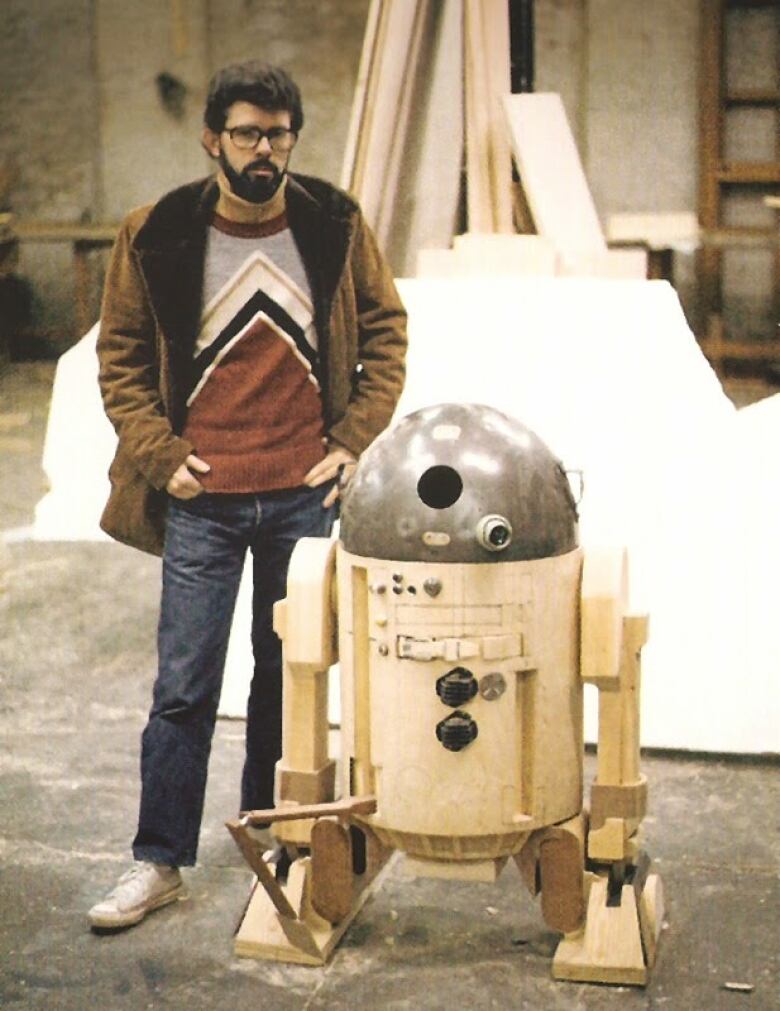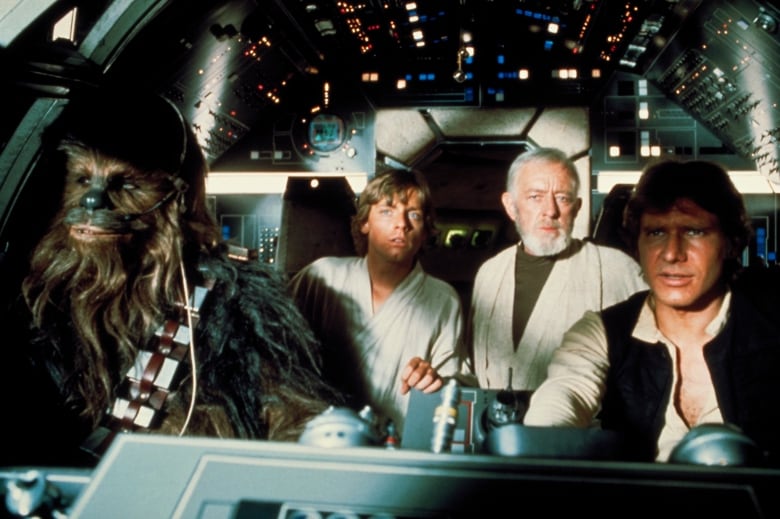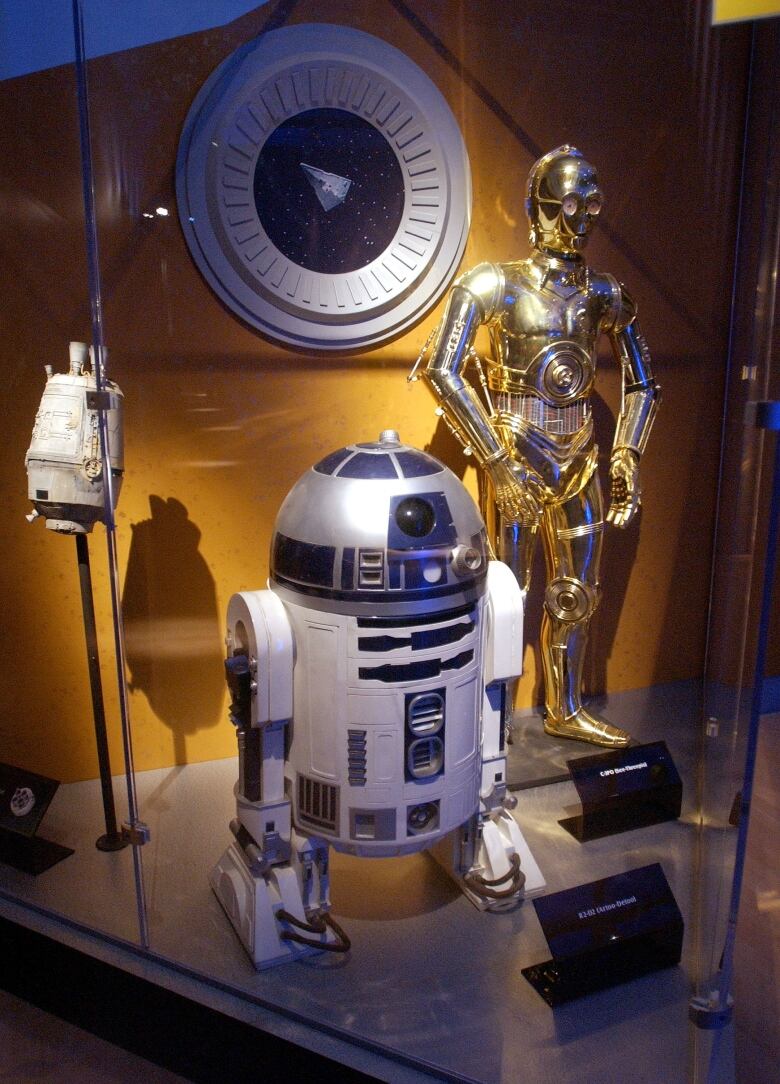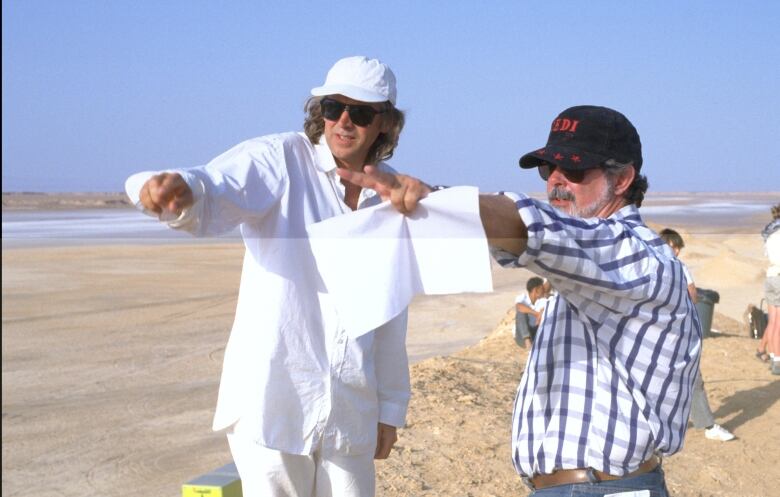Roger Christian, original Star Wars designer, recalls making movie magic
Toronto-based designer and filmmaker helped shape Star Wars aesthetic

The first Star Wars film "was a rough, dusty western, made against impossible odds and with an impossible budget," says Roger Christian, but the epic space saga and the visual design he created for it have been etched intoHollywood history.
Christian, theBritish-born set decorator, production designer and filmmaker now based in Toronto, was the third man hired by George Lucas to work on 1977'sStar Wars: Episode IV A New Hope. It would eventually earnhiman Oscar for set decoration.

But the iconic movie's visual appeal was a happy accident, dictated by an extremely modest budget for this space western, he said, recalling thathe only had $200,000 for all the sets and props.
And yet, "I think it somehow generated something on the screen that people connected to," he told CBC News.
- ARCHIVES |Justin Trudeau, 11, reviews Return of the Jedi
- How Star Wars revolutionized movie merchandising
Sci-fi that looked 'lived-in'
Inspired by Lucas's script, the Star Wars look came directly from Christian's own aesthetic.
"Our first conversation was about science fiction and how I disliked it up until that point because it was all plastic and new," herecalled of his initial meeting with Lucas.
"I didn't relate to it, and I thought audiences didn't, and that's exactly what he [Lucas] wanted."
Both men wanted theStar Wars aestheticto look as real and lived in as possible justlike when Christian was a child and painteddirt onto his toy cars to make them appear morerealistic.

For instance, Christianscroungedmaterials and props from old airplanes that had been scrapped and were being sold by the pound.Those went into creating the cockpit of Han Solo's now-iconic Millennium Falcon spacecraft, among other sets.
Christian also created the film's weapons, including the all-important lightsaberused byJedi knights for combat.
The lightsaber hand gripswere adapted from an old Graflex flash handle from a 1930s-era camera he found in an old photography shop in London.(The glowing blades were created in post-production by means of an animation technique called rotoscoping.)
Originallycalled alaser sword, the futuristic weaponconnected Star Wars with the myths of King Arthur's sword Excalibur as told in the tales of Knights of the Round Table.
"It represents a lot more than what it is . It's a light blade that is powered by the force, so therefore the light as a saber is something everyone identified with and everyone wants," Christian said.

"Everyone still does: every kid wants a lightsaber,because it's like a weapon of the future."
Christian also used his ingenuity to create the much-loved robots C-3PO and R2-D2.The prototype R2-D2 was made of strong marine wood bent into shape to accommodate 1.12-metre tall actor Kenny Baker, who brought the quirky robot to lifein the days before computer-generated imagery was common.
Christian carved some of the details into the wood with a pen knife at home.Thetop of R2-D2 came from an abandoned lamp that had once lit a studio set. The body wasdecorated with airplane nozzles and other bits of scrap that he glued on.
Alien and more
Christian went on to direct the second unit on 1983'sStar Wars: Episode VI Return of the Jedi and 1999'sStar Wars: Episode I The Phantom Menace.He also directed the Oscar-winning short drama The Dollar Bottom,as well as feature films Nostradamus (1994), Underworld (1996),Battlefield Earth (2000) and more. He received an Oscar nomination for his work as art director on 1979'sAlien.

Although he's not working on the new Star Wars films, many fans have already noted how much the look of the forthcoming Star Wars: The Force Awakens owes to Christian's ground-breaking work on the originalmovie.
Though TheForce Awakensissurely packed with CGI effects, director J.J. Abrams has reportedly tried to make itfeel realisticby relyingmore onprops and setsand less ondigital wizardry.
Holding his Oscar in hand, Christian approves.
"I think what's he's done is to do what's required: to go to the first film everyone loves and identifies with and bring it to a new generation."













_(720p).jpg)


 OFFICIAL HD MUSIC VIDEO.jpg)
.jpg)



























































































